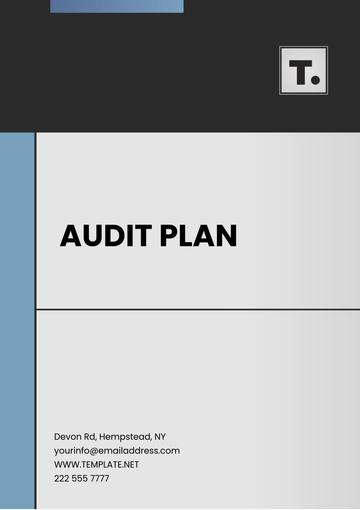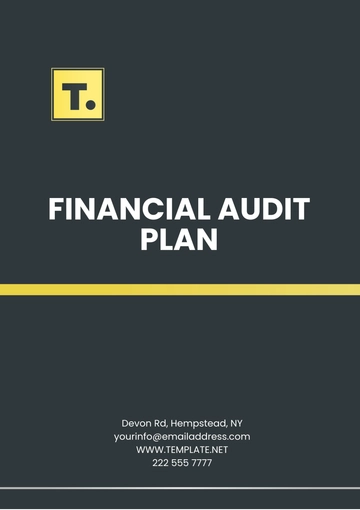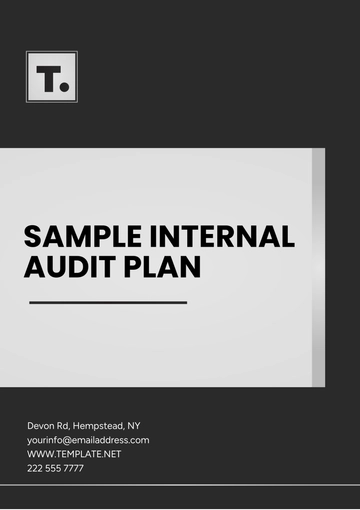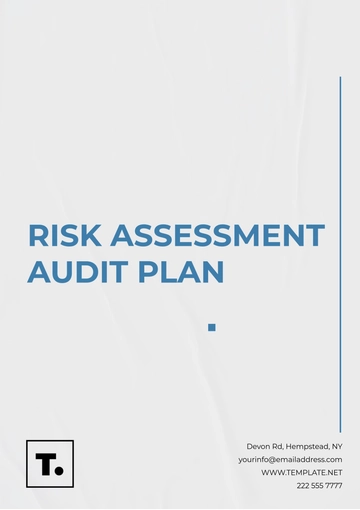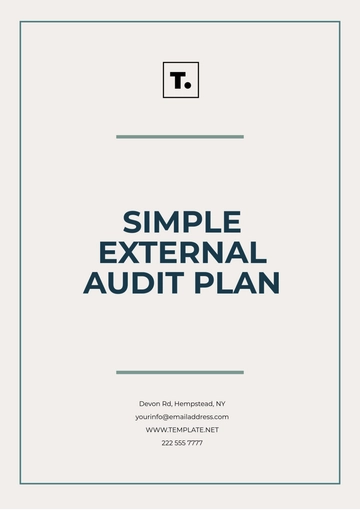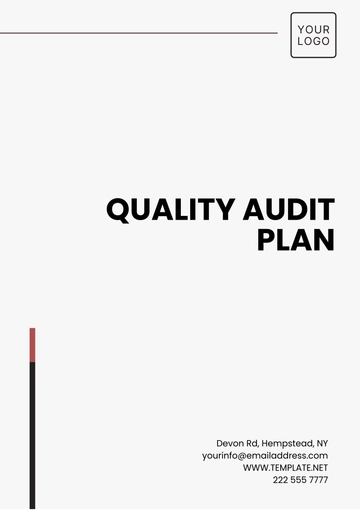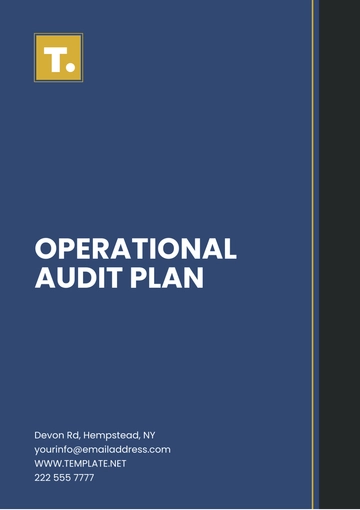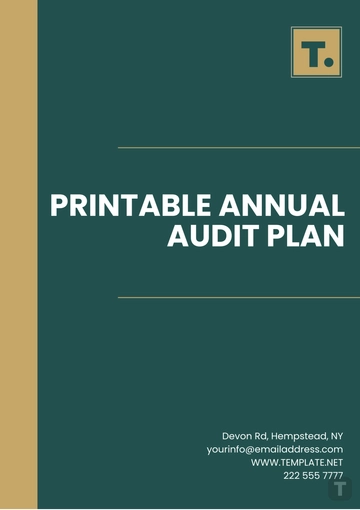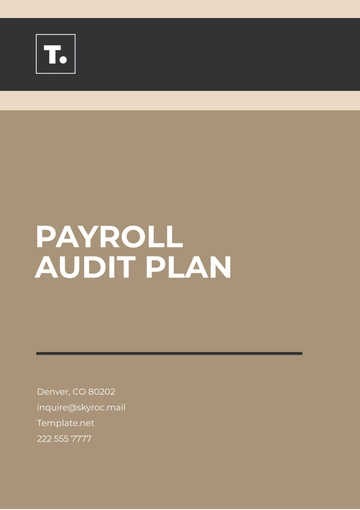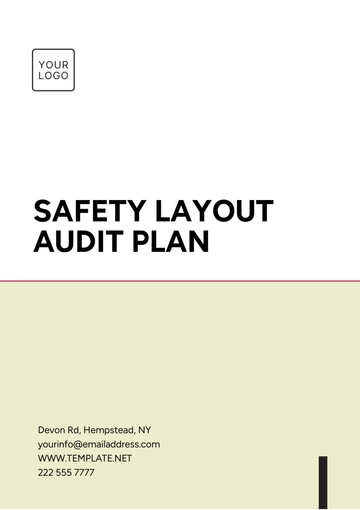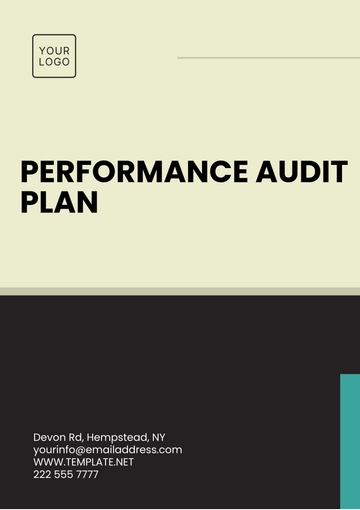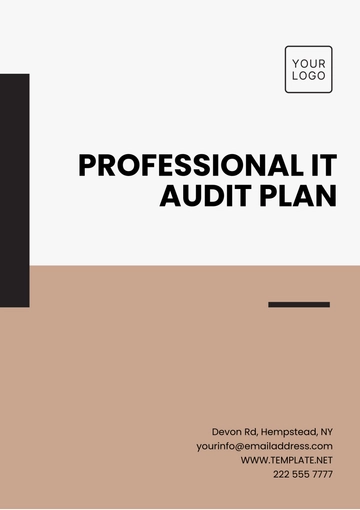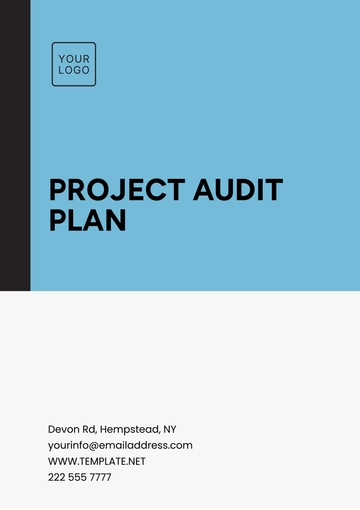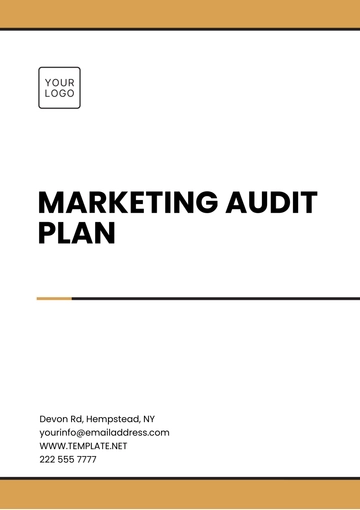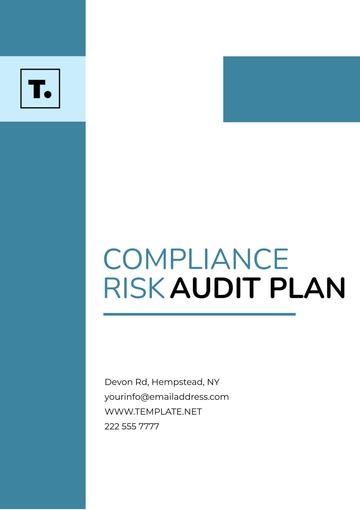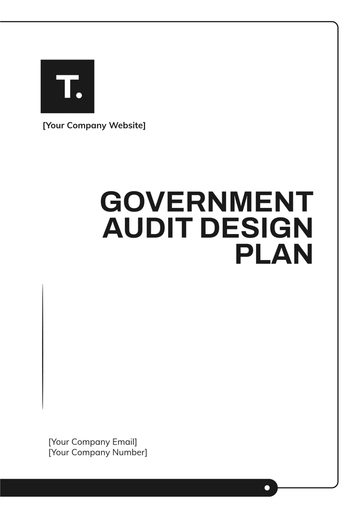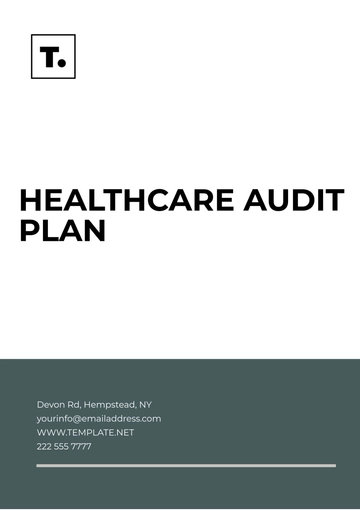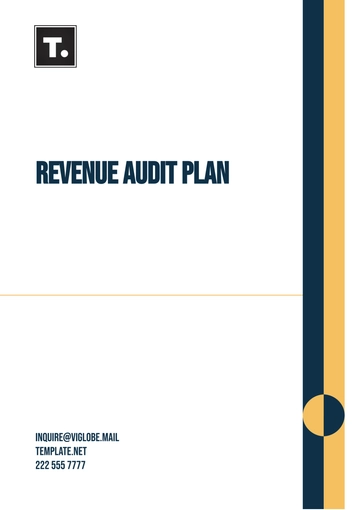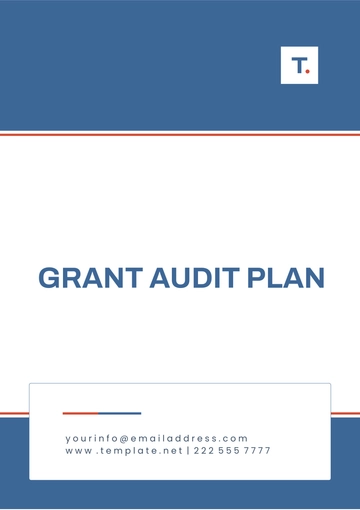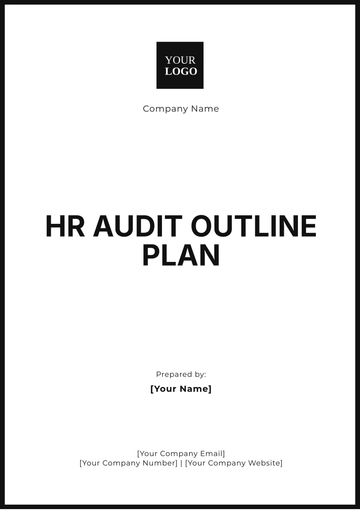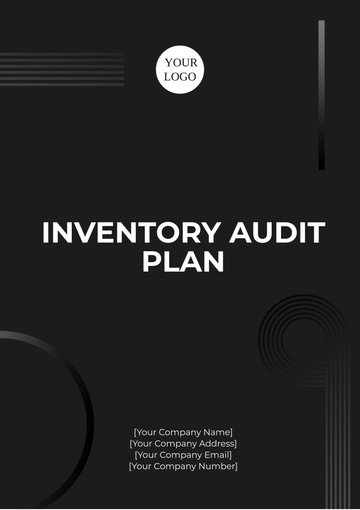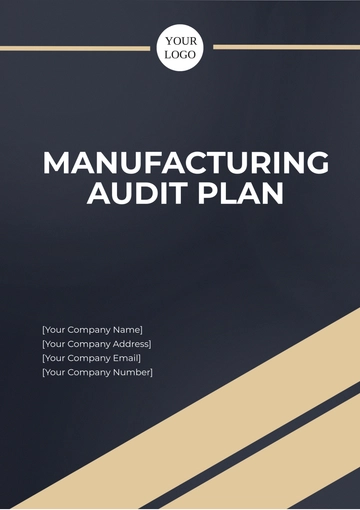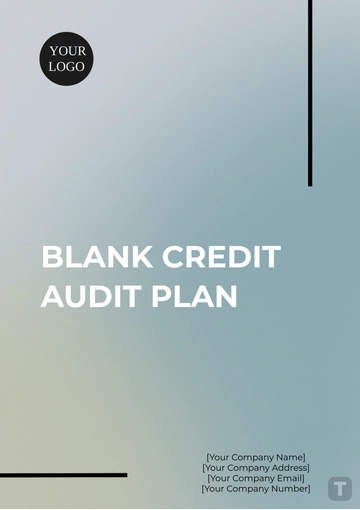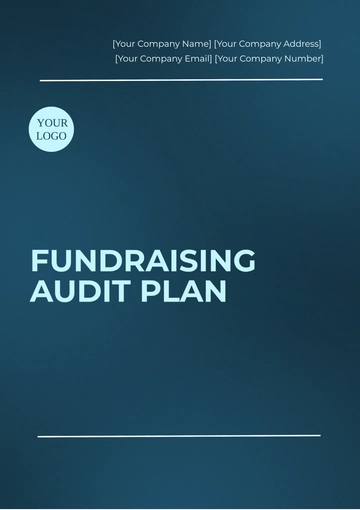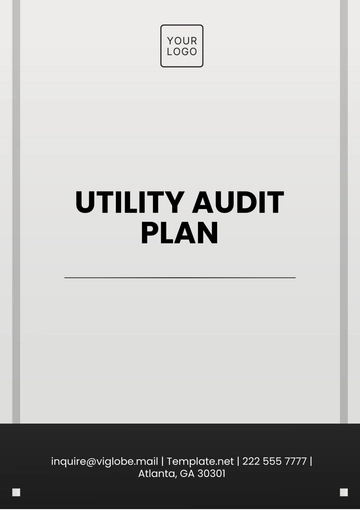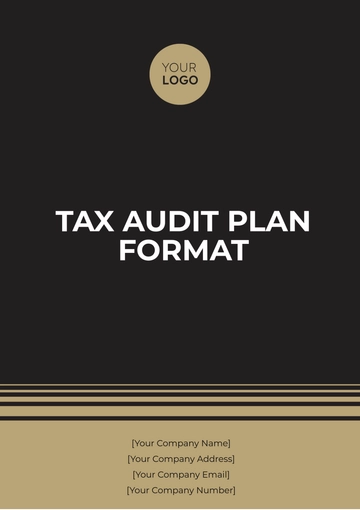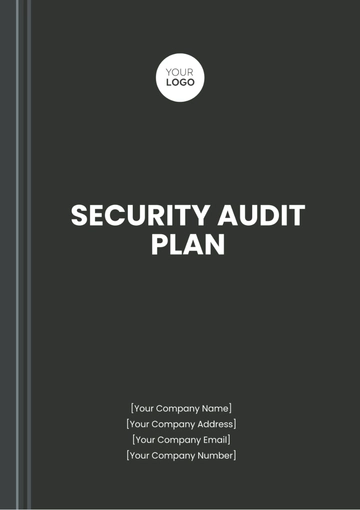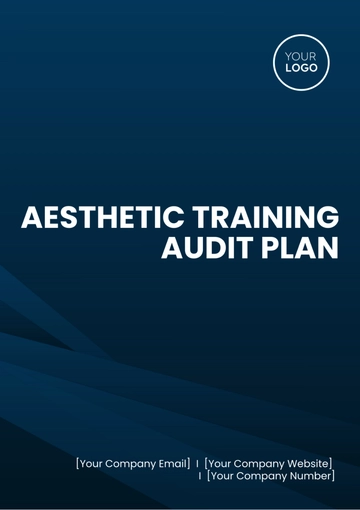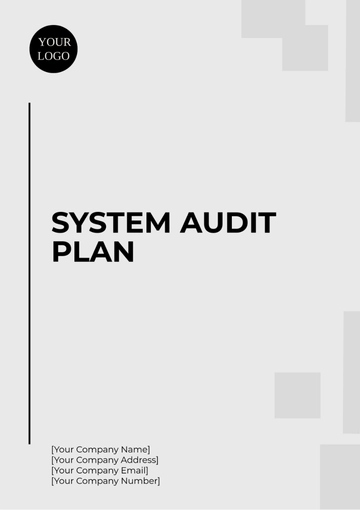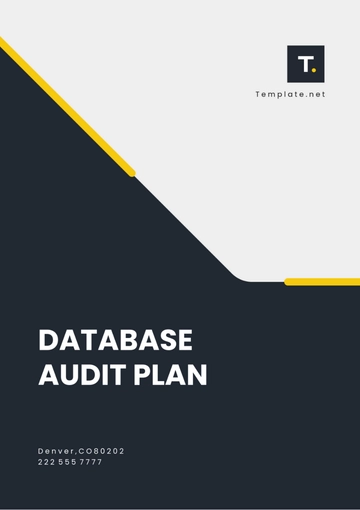Free Finance Annual Audit Strategy Plan
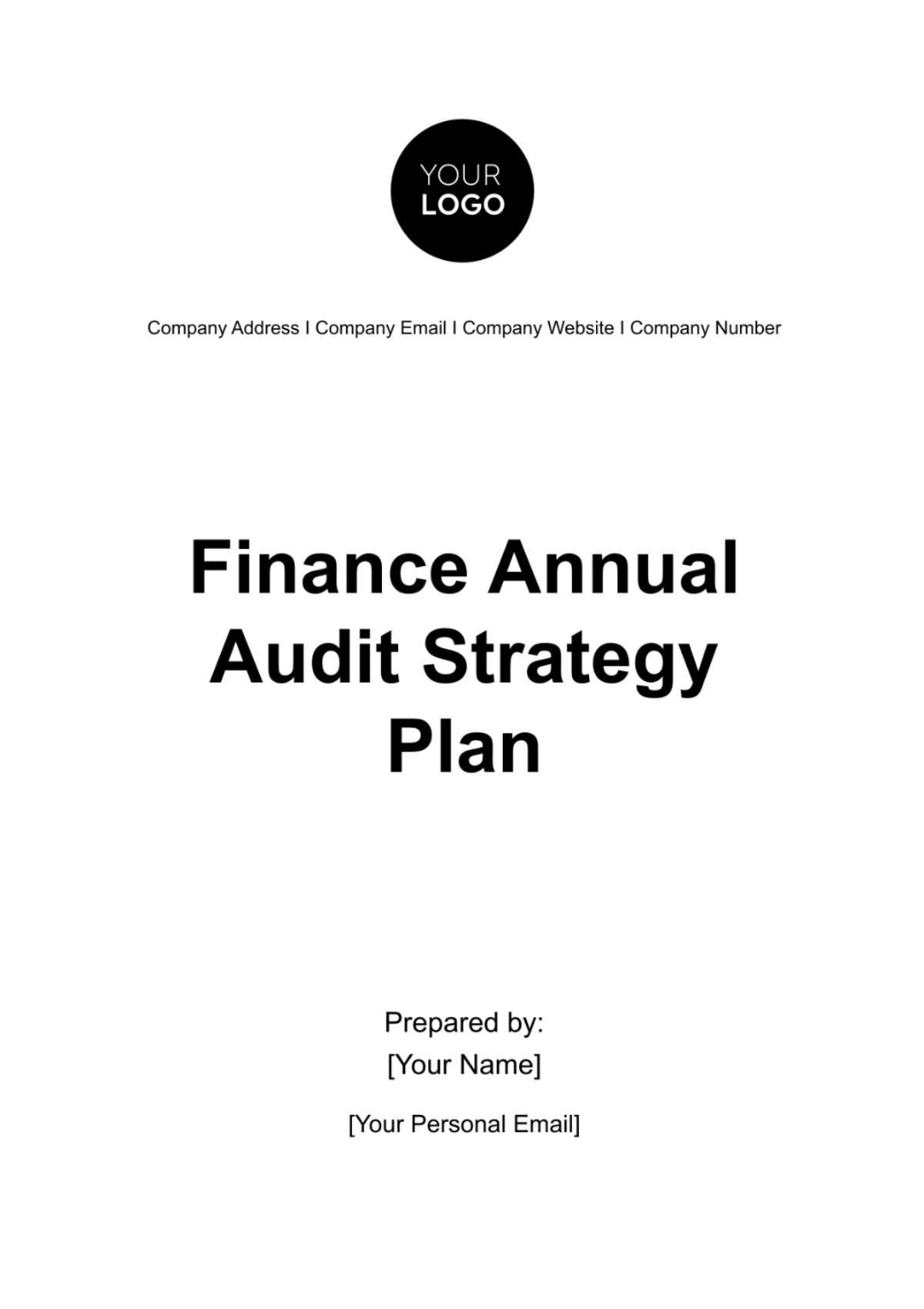
I. Introduction
This strategy plan serves as a pivotal document delineating our meticulous approach to financial audits for the upcoming year. In a rapidly evolving financial landscape, this plan sets the stage for a proactive and strategic audit methodology. Through a holistic examination of our financial processes and controls, the plan aims to fortify organizational resilience, ensure regulatory compliance, and provide stakeholders with transparent insights. As we navigate the complexities of the financial realm, this underscores our commitment to upholding the highest standards of fiscal responsibility and integrity. Guided by this strategic plan, we embark on a journey of comprehensive financial assessment, positioning our organization for sustained success and stakeholder trust.
II. Organizational Overview
A. Background
The organization within the finance industry is a prominent player committed to delivering financial services that align with the highest standards of integrity and customer satisfaction. With the years in the industry, our dedication to innovation has allowed us to remain a leader in providing exceptional financial solutions.
B. Financial Processes Overview
Within our financial processes, the budgeting system is a collaborative effort, ensuring that financial goals are seamlessly integrated with our broader strategic objectives. The financial reporting framework adheres to rigorous standards, providing stakeholders with real-time and accurate insights. Our cash management protocols prioritize liquidity while optimizing returns on investments, reflecting our commitment to sound financial principles.
C. Stakeholder Mapping
In the finance industry, stakeholders are multifaceted, including internal teams such as Finance, Operations, and Executive Leadership. External stakeholders range from regulatory bodies and external auditors to investors. Effective communication and collaboration with these stakeholders are integral to the success of our financial audit and the overall health of our organization.
D. Previous Audit Insights
Insights gained from prior audits have been instrumental in refining our financial practices. Identified areas of improvement, such as optimizing internal control frameworks and enhancing risk mitigation strategies, have been key focal points. Addressing these insights has strengthened our financial resilience and fortified our commitment to continuous improvement.
E. Contextual Considerations
Amid the dynamic landscape of the finance industry, external factors significantly influence our financial operations. Economic trends, industry-specific challenges, and evolving regulatory frameworks all play a crucial role in shaping our financial environment. Being attuned to these contextual factors allows us to proactively adapt our strategies, ensuring resilience and sustainable growth in an ever-changing financial landscape.
III. Regulatory and Industry Landscape
The regulatory and industry landscape is a critical aspect of our plan, ensuring that our financial practices align with legal requirements and industry standards. The table below provides an overview of key considerations:
Regulatory Area | Compliance Status | Key Action Items | Responsible Party | Deadline |
Financial Reporting Standards | Compliant | Regularly review and update accounting policies to align with the latest reporting standards. | Chief Financial Officer (CFO) | Quarterly |
Maintaining compliance with the latest financial reporting standards is crucial for transparency and accountability. This data ensures that our financial operations are conducted ethically, legally, and in alignment with the best practices of the finance industry. The regular reviews and updates of accounting policies ensure that our financial statements accurately reflect the organization's financial health. Moreover, the continuous monitoring and adaptation to evolving regulatory requirements and industry standards reflect our commitment to maintaining the highest standards of financial governance.
IV. Risk Assessment
Below, we present the results of the risk assessment and the corresponding mitigation plans, categorized into financial and operational risks.
A. Results
Financial Risk
The assessment identified a potential risk associated with market fluctuations impacting our investment portfolio. Given the volatility in financial markets, there is a risk of unrealized losses affecting our financial stability.
Operational Risks
Operational risks were recognized in the form of potential disruptions to our IT infrastructure, which could compromise data integrity and disrupt crucial financial processes.
B. Mitigation Plan
Financial Risk
To mitigate the identified financial risk, we will implement a diversified investment strategy. This involves spreading investments across different asset classes to minimize the impact of market volatility on our overall portfolio. Regular monitoring and adjustments to the investment mix will be conducted in response to market dynamics.
Operational Risks
Mitigating operational risks requires a robust IT resilience plan. We will invest in redundant IT systems, implement regular data backups, and conduct comprehensive training sessions for employees to enhance their awareness of potential cyber threats. Additionally, engaging with cybersecurity experts for regular audits will fortify our defense against potential IT disruptions.
V. Annual Audit Objectives and Scope
A. Objectives
Accuracy of Financial Statements
The primary objective is to verify the accuracy of our financial statements. This involves a detailed examination of transaction records, ensuring that reported financial data is precise and reflective of the organization's financial health.
Compliance with Regulatory Standards
Ensuring compliance with relevant regulatory standards is a fundamental objective. This includes a thorough review to confirm adherence to financial reporting requirements, industry-specific regulations, and legal frameworks governing financial operations.
Identification of Financial Risks
A key objective is the identification and assessment of financial risks. This involves a comprehensive analysis of market risks, credit risks, and other factors that could impact the organization's financial stability.
B. Scope
Financial Statement Audit
The scope encompasses a detailed audit of financial statements, including the income statement, balance sheet, and cash flow statement. This ensures the accuracy and reliability of financial information presented to stakeholders.
Compliance Audit
A focused examination of compliance with regulatory standards and legal requirements is part of the scope. This involves assessing adherence to financial reporting standards, tax regulations, and industry-specific compliance obligations.
Risk Assessment and Mitigation
The scope extends to a thorough assessment of financial risks and the formulation of mitigation strategies. Identifying potential risks allows for proactive measures to be implemented, safeguarding the organization against adverse financial impacts.
VI. Annual Audit Methodologies
The strategies and methodologies that we will employ to execute a comprehensive annual audit are:
A. Risk-Based Audit Approach
Our audit methodologies incorporate a risk-based approach. This involves identifying and assessing risks within various financial processes. The intensity of audit procedures is tailored based on the perceived level of risk, allowing for a focused and efficient audit.
B. Sampling Techniques
To ensure the representativeness of audit findings, we will utilize statistically sound sampling techniques. This involves selecting a subset of transactions for examination, providing a reliable basis for extrapolating results to the entire population.
C. Internal Control Evaluation
A comprehensive evaluation of internal controls is integral to our methodologies. This includes assessing the effectiveness of internal controls in preventing and detecting financial misstatements, ensuring the reliability of financial reporting.
D. Data Analytics Integration
Data analytics tools will be utilized to analyze large datasets, identify anomalies, and derive meaningful insights that contribute to a more thorough audit process.
E. Continuous Monitoring
Our audit methodologies emphasize continuous monitoring throughout the fiscal year. This ongoing scrutiny allows for the prompt identification of emerging risks and deviations from financial norms, enabling timely corrective actions.
VII. Annual Audit Compliance Strategies
A. Regulatory Framework Adherence
Comprehensive Regulatory Mapping
Our strategy involves mapping out the diverse regulatory landscape to ensure all applicable standards are identified.
Regular Compliance Updates
Regular updates on regulatory changes are disseminated to the audit team, ensuring real-time awareness of any alterations to compliance requirements.
Dedicated Compliance Officer
A designated Compliance Officer oversees the integration of compliance strategies, providing a focal point for regulatory adherence.
B. Industry-Specific Considerations
In-Depth Industry Analysis
Our approach includes conducting an in-depth analysis of industry-specific regulations to address nuances that may impact the audit.
Engagement with Industry Experts
Regular consultations with industry experts ensure that our compliance strategies align with the latest industry standards.
C. Technology Integration for Compliance
Automated Compliance Monitoring
Leveraging technological tools for automated compliance monitoring ensures real-time tracking and identification of any deviations.
Blockchain for Transparency
Exploring blockchain technology enhances transparency, providing an immutable ledger of transactions for compliance verification.
Data Encryption Protocols
Robust data encryption protocols are implemented to safeguard sensitive information in line with data protection regulations.
D. Third-Party Audits and Validation
External Auditors Engagement
Collaborating with external auditors for periodic third-party audits validates our compliance efforts.
Independent Compliance Validation
Independent validation processes are instituted to ensure the objectivity and effectiveness of our compliance strategies.
VIII. Budget Allocation
The meticulous distribution of resources is crucial for optimizing the effectiveness of the audit process. Below is a table outlining the budget allocation plan for he carrying out of the strategy plan:
Category | Budget |
Compliance Tools and Software | $100,000 |
Each category's budget is carefully tailored to the specific needs of the audit strategy, reinforcing the organization's commitment to conducting a thorough, compliant, and forward-looking financial audit. Funds allocated to compliance tools and software, totaling $100,000, cover the acquisition of cutting-edge solutions that aid in monitoring and ensuring adherence to regulatory standards. This investment is vital for maintaining a robust compliance framework and staying abreast of evolving regulatory requirements. Overall, this budget allocation plan not only supports the effective execution of the strategy but also demonstrates fiscal responsibility and prudent resource management.
IX. Annual Audit Reporting and Documentation
A. Comprehensive Documentation Practices
Document Retention Policies
Documents related to the audit will be retained in compliance with legal requirements and industry standards for a minimum of 3 years.
Rigorous documentation practices will include timestamping, ensuring the preservation of document integrity.
Centralized Document Repository
We will use a centralized electronic repository to enhance accessibility and streamline the organization of audit documents.
Access controls will be implemented to ensure secure and restricted access to sensitive audit information.
Version Control Protocols
Stringent version control mechanisms will be implemented through [version control software], enabling the tracking of revisions and updates.
Any changes to audit documentation will be accompanied by clear documentation of the modifications made.
B. Detailed Audit Reports
Financial Statements Analysis
The financial statements analysis will include visual representations of key financial metrics, such as revenue growth, profit margins, and liquidity ratios.
Compliance Assessment
A dedicated section will comprehensively outline the organization's compliance with relevant regulatory standards, industry norms, and internal policies.
C. Visual Representation of Findings
Infographics and Dashboards
Dynamic infographics and dashboards will be created to convey complex audit findings in an easily digestible format.
Visual elements will be designed to enhance stakeholder engagement and facilitate a quicker understanding of critical audit insights.
Trend Analysis Graphs
We will incorporate trend analysis graphs to illustrate financial patterns, enabling stakeholders to identify evolving trends.
These graphs will be accompanied by succinct explanations to aid interpretation.
Interactive Reporting Tools
Deployment of interactive reporting tools will allow stakeholders to drill down into specific areas of interest within the audit report.
Stakeholders can explore detailed data points, fostering a deeper understanding of the audit outcomes.
D. Stakeholder-specific Reports
Board of Directors Report
A specialized report for the Board of Directors will emphasize strategic insights, risk assessments, and recommendations aligned with their governance role. The report will be presented in a format conducive to discussions during board meetings.
Shareholder Communication
Tailored communication for shareholders will include concise summaries, visual elements, and implications of findings. Emphasis will be placed on ensuring transparency while addressing the financial aspects relevant to shareholders.
Management Action Plan
A detailed management action plan, outlining steps to address each audit finding, will be incorporated into the report.
Each action item will include timelines, responsible parties, and performance metrics for tracking progress.
E. Continuous Improvement Feedback Loop
Post-Audit Feedback Sessions
Scheduled post-audit feedback sessions with the audit team will be conducted to gather insights into the efficacy of the reporting process.
Feedback will be utilized to refine documentation practices and improve future reporting methodologies.
Stakeholder Feedback Mechanisms
Feedback mechanisms, such as post-report surveys and stakeholder interviews, will be instituted to gauge the clarity and effectiveness of the reports.
Stakeholder input will inform adjustments to reporting approaches, ensuring alignment with stakeholder expectations.
X. Conclusion
In conclusion, this plan outlines a comprehensive roadmap for conducting a rigorous and insightful annual audit in alignment with organizational objectives. By strategically allocating resources, embracing technological advancements, and fostering continuous improvement, this plan underscores our commitment to financial transparency, regulatory compliance, and organizational excellence. As we embark on this annual audit journey, the plan serves as a guiding beacon, ensuring that our audit processes remain dynamic, adaptive, and capable of delivering valuable insights to stakeholders. Through adherence to this strategy, we affirm our dedication to maintaining the highest standards of financial integrity and accountability within the organization.
- 100% Customizable, free editor
- Access 1 Million+ Templates, photo’s & graphics
- Download or share as a template
- Click and replace photos, graphics, text, backgrounds
- Resize, crop, AI write & more
- Access advanced editor
Strategically plan your financial journey with the Finance Annual Audit Strategy Plan Template, a customizable guide on Template.net! This editable document serves as a roadmap to audit success. Edit effortlessly with our AI Editor Tool, ensuring compliance and excellence in your annual audit processes. Craft a strategic audit plan now!
You may also like
- Finance Plan
- Construction Plan
- Sales Plan
- Development Plan
- Career Plan
- Budget Plan
- HR Plan
- Education Plan
- Transition Plan
- Work Plan
- Training Plan
- Communication Plan
- Operation Plan
- Health And Safety Plan
- Strategy Plan
- Professional Development Plan
- Advertising Plan
- Risk Management Plan
- Restaurant Plan
- School Plan
- Nursing Home Patient Care Plan
- Nursing Care Plan
- Plan Event
- Startup Plan
- Social Media Plan
- Staffing Plan
- Annual Plan
- Content Plan
- Payment Plan
- Implementation Plan
- Hotel Plan
- Workout Plan
- Accounting Plan
- Campaign Plan
- Essay Plan
- 30 60 90 Day Plan
- Research Plan
- Recruitment Plan
- 90 Day Plan
- Quarterly Plan
- Emergency Plan
- 5 Year Plan
- Gym Plan
- Personal Plan
- IT and Software Plan
- Treatment Plan
- Real Estate Plan
- Law Firm Plan
- Healthcare Plan
- Improvement Plan
- Media Plan
- 5 Year Business Plan
- Learning Plan
- Marketing Campaign Plan
- Travel Agency Plan
- Cleaning Services Plan
- Interior Design Plan
- Performance Plan
- PR Plan
- Birth Plan
- Life Plan
- SEO Plan
- Disaster Recovery Plan
- Continuity Plan
- Launch Plan
- Legal Plan
- Behavior Plan
- Performance Improvement Plan
- Salon Plan
- Security Plan
- Security Management Plan
- Employee Development Plan
- Quality Plan
- Service Improvement Plan
- Growth Plan
- Incident Response Plan
- Basketball Plan
- Emergency Action Plan
- Product Launch Plan
- Spa Plan
- Employee Training Plan
- Data Analysis Plan
- Employee Action Plan
- Territory Plan
- Audit Plan
- Classroom Plan
- Activity Plan
- Parenting Plan
- Care Plan
- Project Execution Plan
- Exercise Plan
- Internship Plan
- Software Development Plan
- Continuous Improvement Plan
- Leave Plan
- 90 Day Sales Plan
- Advertising Agency Plan
- Employee Transition Plan
- Smart Action Plan
- Workplace Safety Plan
- Behavior Change Plan
- Contingency Plan
- Continuity of Operations Plan
- Health Plan
- Quality Control Plan
- Self Plan
- Sports Development Plan
- Change Management Plan
- Ecommerce Plan
- Personal Financial Plan
- Process Improvement Plan
- 30-60-90 Day Sales Plan
- Crisis Management Plan
- Engagement Plan
- Execution Plan
- Pandemic Plan
- Quality Assurance Plan
- Service Continuity Plan
- Agile Project Plan
- Fundraising Plan
- Job Transition Plan
- Asset Maintenance Plan
- Maintenance Plan
- Software Test Plan
- Staff Training and Development Plan
- 3 Year Plan
- Brand Activation Plan
- Release Plan
- Resource Plan
- Risk Mitigation Plan
- Teacher Plan
- 30 60 90 Day Plan for New Manager
- Food Safety Plan
- Food Truck Plan
- Hiring Plan
- Quality Management Plan
- Wellness Plan
- Behavior Intervention Plan
- Bonus Plan
- Investment Plan
- Maternity Leave Plan
- Pandemic Response Plan
- Succession Planning
- Coaching Plan
- Configuration Management Plan
- Remote Work Plan
- Self Care Plan
- Teaching Plan
- 100-Day Plan
- HACCP Plan
- Student Plan
- Sustainability Plan
- 30 60 90 Day Plan for Interview
- Access Plan
- Site Specific Safety Plan
